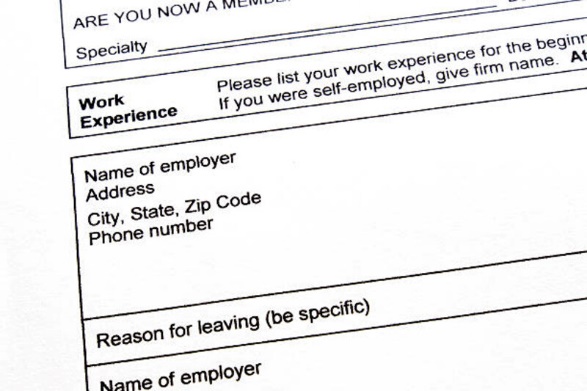The Complete Guide to Form 6251: Alternative Minimum Tax-Individuals
Jan 24, 2025 By Rick Novak
The alternative minimum tax (AMT) is often a forgotten but unavoidable part of filing federal income taxes for certain taxpayers. If you're one of them, you must understand how Form 6251 works and what it means for your annual return. This comprehensive guide will take an in-depth look at the form, provide expert tips on navigating it successfully and explain what other information you might need to remember when doing your taxes this year.
Overview of Form 6251 and Alternative Minimum Tax
Form 6251 calculates and reports alternative minimum tax (AMT). The AMT is a separate tax system from regular income tax. It affects certain taxpayers with substantial deductions, such as business expenses, charitable giving, or medical costs. When these deductions are subtracted from adjusted gross income (AGI), it can lead to some taxpayers owing more taxes than they would under the usual federal income tax rate.
Form 6251 seeks to close this gap by ensuring that higher-income individuals pay at least some extra taxes.
Who Must File Form 6251?

You must file Form 6251 if:
● Your taxable income, minus certain deductions and adjustments, exceeds the AMT exemption amount (which is adjusted each year)
● You made money from an equity incentive program
● You claimed a special depreciation allowance or any other tax preference item
● You exercised an incentive stock option in 2019.
How to Complete Form 6251: Step-by-Step Instructions:
Before you start filling out Form 6251, you must understand a few basic concepts about the form. First of all, it's divided into three parts. Part I is for regular tax calculations, Part II is for Alternative Minimum Tax calculations, and Part III is for miscellaneous estimates.
It's also important to note that you must complete Parts I and II before proceeding to Part III. Here's a step-by-step guide on how to fill out Form 6251:
1. Begin by entering your name, address, social security number, and filing status in the spaces provided at the top of the form.
2. Move onto Part I and enter your income from wages, salaries, tips, and other types of income, like investments or business profits, in the appropriate lines on page 1.
3. On page 2 of Part I, enter any deductions you may have, such as charity donations or medical expenses (if applicable). Be sure to subtract these amounts from your total taxable income.
4. Move onto Part II and enter any adjustments to income, such as alimony payments or student loan interest deductions, in the corresponding lines. Once all the figures have been entered, subtract this amount from your total taxable income to determine your alternative minimum tax (AMT).
5. Lastly, move on to Part III and answer any relevant questions regarding exceptional circumstances that may apply to you regarding AMT calculations. Be sure to provide complete details when answering these questions to calculate your year's AMT accurately.
How to Calculate Alternative Minimum Tax Using Form 6251
To accurately fill out your Form 6251, you'll need to know the following information:
• Your total taxable income after deductions
• Any adjustments to your income, such as alimony payments or student loan interest deductions
• Any tax preference items you may have claimed, such as special depreciation allowances
• The AMT exemption amount for the year (this is adjusted annually)
Once you have all of this information, it's time to calculate your alternative minimum tax. Start by subtracting any adjustments to your income from your total taxable income. Then remove the AMT exemption amount. Whatever remains is your Alternative Minimum Taxable Income (AMTI). You can then use the Tax Table in Part III of Form 6251 to determine how much you owe in taxes.
Tips From The Experts
Filing Form 6251 can be tedious and time-consuming, but it is an integral part of the tax filing process for certain taxpayers. Here are some additional tips from the experts to make this process easier:
• Make sure you understand all the terms used in Form 6251 before filling it out.
• Double check your calculations to ensure accuracy.
• Consult a qualified tax professional if you have questions about completing Form 6251.
Filing Form 6251 can be challenging, but following these steps will help make the process as smooth as possible. By taking extra care when filling out this form, you can avoid costly mistakes and save money on your taxes.
What Is Included in the Regular Income Tax Calculation on Form 6251?

Form 6251 calculates your alternative minimum tax (AMT) liability and includes a standard income tax calculation. This is done in Part I of the form and consists of all taxable income you received during the year from wages, salaries, tips, and other types of income like investments or business profits.
Once all the figures have been entered, deductions such as charity donations or medical expenses (if applicable) can be subtracted from this amount to determine your total taxable income for the year. This figure will then be used to compute your final federal tax liability.
Conclusion
Filing Form 6251 is an integral part of the tax filing process for certain taxpayers and may help you save money on your taxes. Before starting, understand all terms used in Form 6251, double-check your calculations, and consult a qualified tax professional if you have any questions. All these steps will help you accurately calculate your alternative minimum tax (AMT) liability for the year.
FAQs
Q: What is the AMT exemption amount?
A: The AMT exemption amount changes annually and can be found in Part II of Form 6251.
Q: Does Form 6251 include a standard income tax calculation?
A: Yes, Part I of Form 6251 includes a standard income tax calculation which consists of all taxable income you received during the year from wages, salaries, and tips, as well as other types of payment such as investments or business profits.

Best Mortgage Lenders Of 2023 If You Have A Bad Credit

How Home Construction Loans Work

Best Student Loans

IHG® Rewards Club Premier Credit Card Review

How To Pay Taxes If You're Overseas

A Closer Look at Form 8606 and its Implications

The Complete Guide to Form 6251: Alternative Minimum Tax-Individuals

Call Loan: Your 101 Guide

What Is a Subprime Mortgage?

